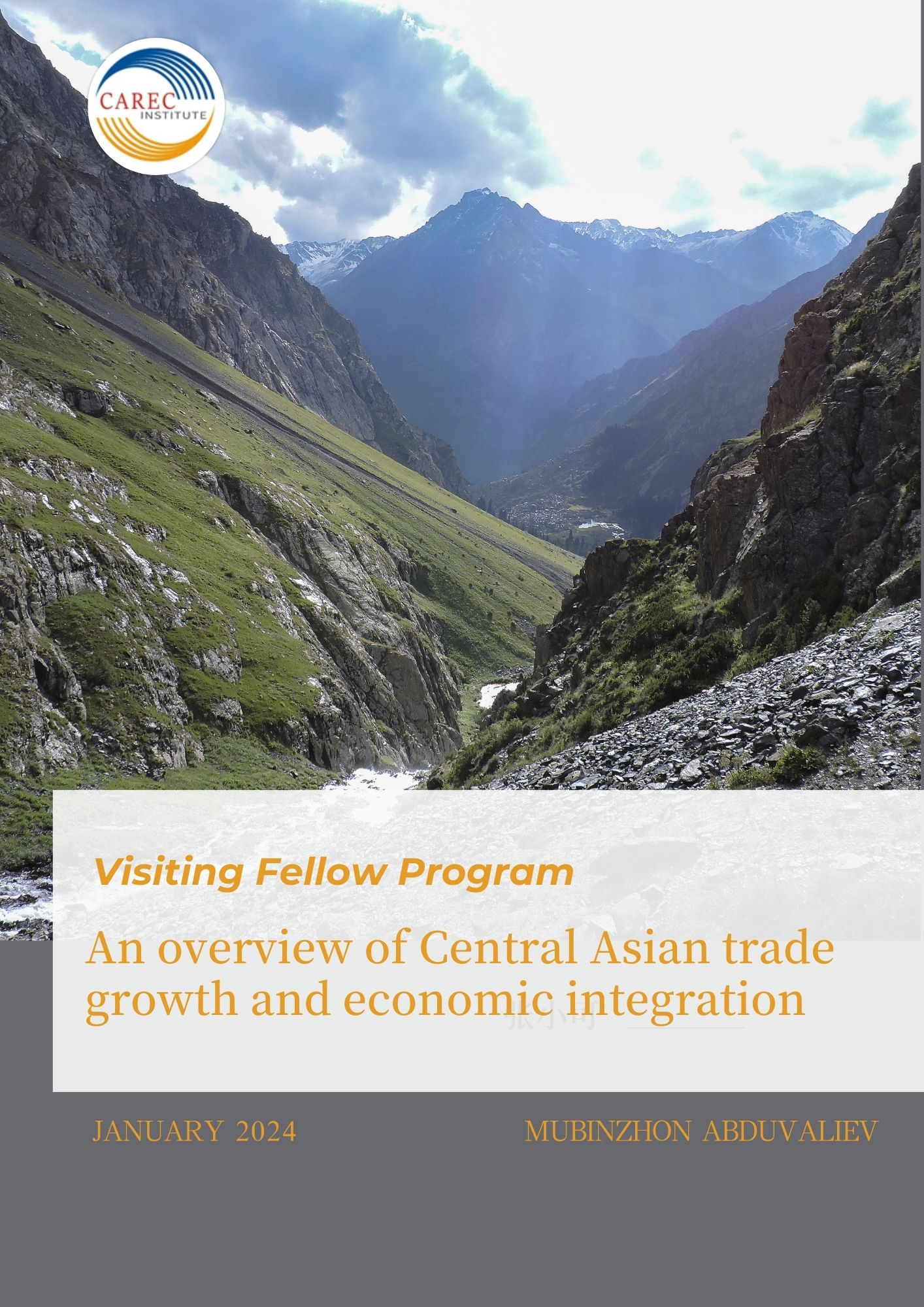Visiting Fellow Paper:An Overview of Central Asian Trade Growth and Economic Integration
CAREC Institute Visiting Fellow Program paper “An Overview of Central Asian Trade Growth and Economic Integration,” authored by Mubinzhon Abduvaliev, studies the relationship between the trade growth in the Central Asian republics and the performance of their major external partners.
After the disintegration of the Soviet Union, many Central Asian republics have adopted multivector foreign economic policies to enhance stability and develop their economies through international cooperation. In consequence, multidimensional foreign economic policies became a distinctive characteristic of all Central Asian republics. Although the republics share many similarities in economics, politics, history, culture, and other aspects, they have chosen to strengthen their inter-regional cooperation rather than their intraregional integration. To assess the prospects of inter- and intra-Central Asia trade relations, the study using panel data examines the extent to which trade growth in the Central Asian republics is related to the performance of their major external partners, including China, the EU and Russia, over the period 2005-2022.
The coefficient of GDP for Central Asian republics takes a significant positive elasticity value of about 0.005 percent to 0.05 percent, indicating that if GDP rises by 1 percent, the amount of exports will go from 0.005 percent to 0.05 percent, respectively. The GDP of China, Russia, and the EU also takes a significant positive elasticity value of about 0.007 percent to 0.09 percent, respectively; this suggests that exports will increase by 0.007 percent to 0.09 percent if their economic size increases by 1 percent.
